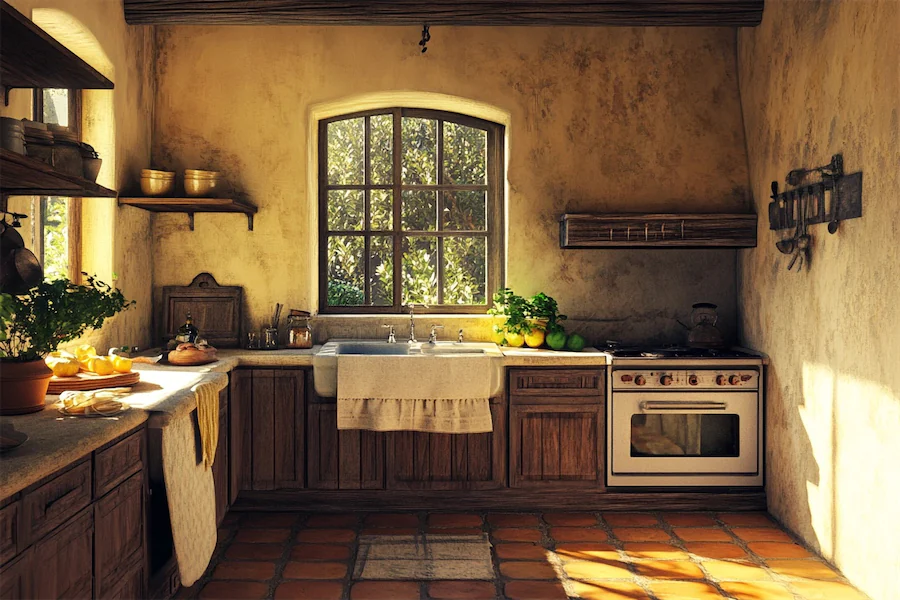A Tuscan kitchen embodies the rustic charm and warmth of Italy’s Tuscany region, characterized by earthy tones, natural materials, and a welcoming atmosphere. This article explores the key features, applications, and considerations when designing a Tuscan kitchen.
Introduction to Tuscan Kitchens
Tuscan kitchens draw inspiration from the Italian countryside, emphasizing a cozy and inviting environment. They often feature elements such as terracotta tiles, wooden beams, and wrought-iron fixtures, creating a space that feels both timeless and lived-in.
Key Features of Tuscan Kitchens
Tuscan kitchens are distinguished by several hallmark features:
- Natural Materials: Utilization of stone, wood, and terracotta to bring the essence of the outdoors inside. For example, stone tiles on walls and floors, wooden cabinetry, and terracotta backsplashes contribute to the rustic ambiance.
- Warm Color Palette: Incorporation of earthy tones such as warm yellows, rich browns, and burnt oranges to evoke the Tuscan landscape. These colors can be applied through wall finishes, cabinetry, and decorative accessories.
- Ornate Lighting: Use of wrought-iron chandeliers and sconces to add elegance and enhance the old-world charm. These fixtures serve as focal points and contribute to the overall warmth of the space.
- Textured Walls: Application of plaster or stucco finishes to create a sense of history and depth. These textured surfaces add character and mimic traditional Tuscan homes.
- Open Shelving and Pot Racks: Display of copper pots, ceramics, and vintage kitchenware to add authenticity and practicality. Open shelving allows for easy access to frequently used items and showcases decorative pieces.
Applications of Tuscan Kitchens
The versatility of Tuscan kitchen designs allows them to be adapted to various settings:
- Traditional Homes: Enhancing classic interiors with a warm and inviting kitchen space that reflects old-world charm.
- Modern Residences: Incorporating Tuscan elements to add character and warmth to contemporary designs, creating a balanced and eclectic aesthetic.
- Open-Plan Layouts: Utilizing Tuscan design principles to create a cohesive and inviting kitchen-dining area that encourages gatherings and socialization.
Considerations When Choosing a Tuscan Kitchen
When planning a Tuscan kitchen, consider the following:
- Authenticity: Incorporate genuine materials and handcrafted elements to maintain the integrity of the design.
- Functionality: Ensure that the kitchen layout and features meet modern needs while preserving the rustic aesthetic.
- Lighting: Balance natural and artificial lighting to highlight architectural features and create a warm ambiance.
- Personal Touches: Add personal items and decor that reflect your style while staying true to Tuscan themes, such as family heirlooms or travel souvenirs.
Conclusion
Tuscan kitchens offer a harmonious blend of rustic charm and timeless elegance. By incorporating natural materials, warm colors, and thoughtful design elements, you can create a kitchen space that embodies the spirit of the Italian countryside, providing both functionality and a welcoming atmosphere.
